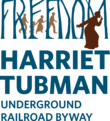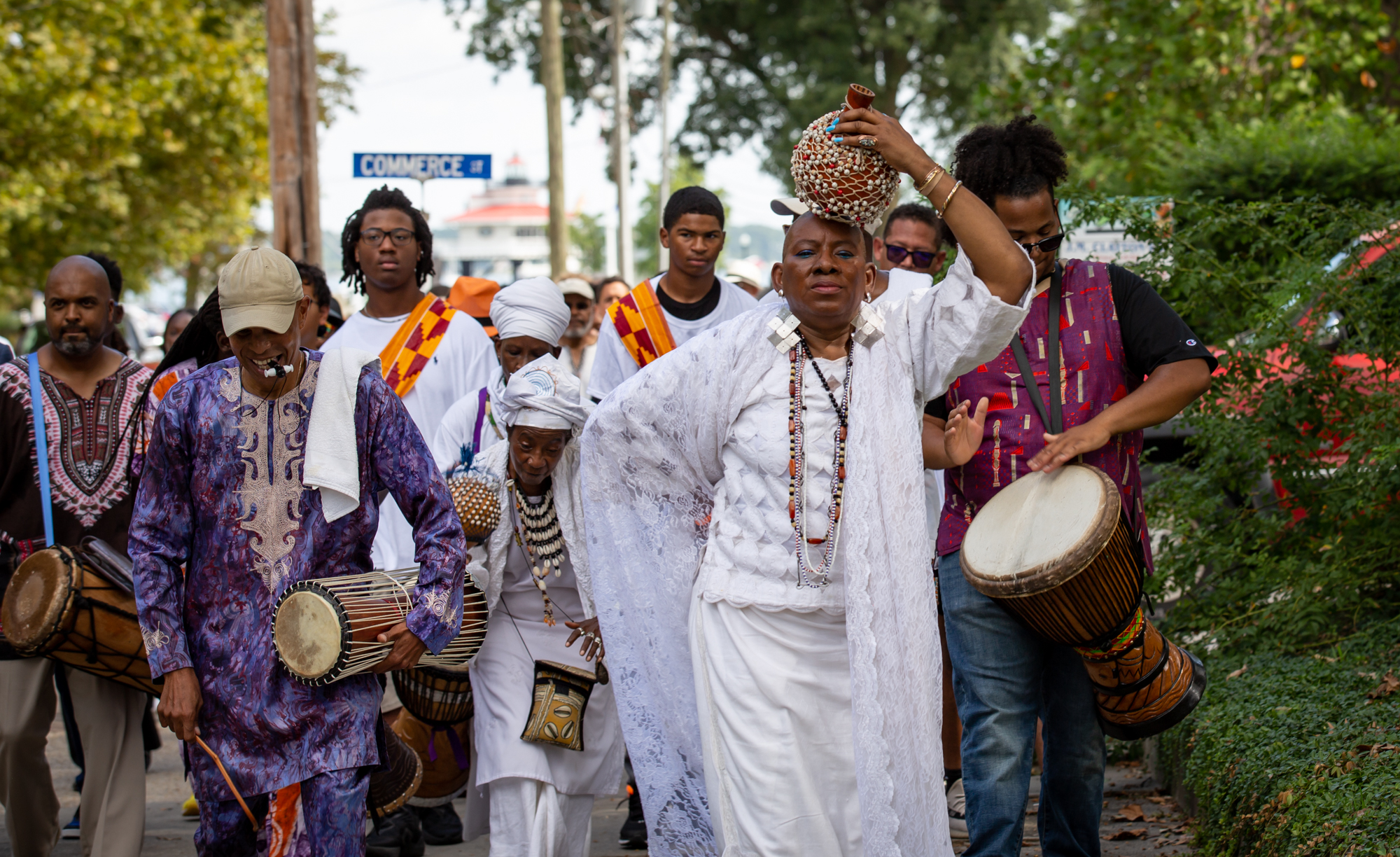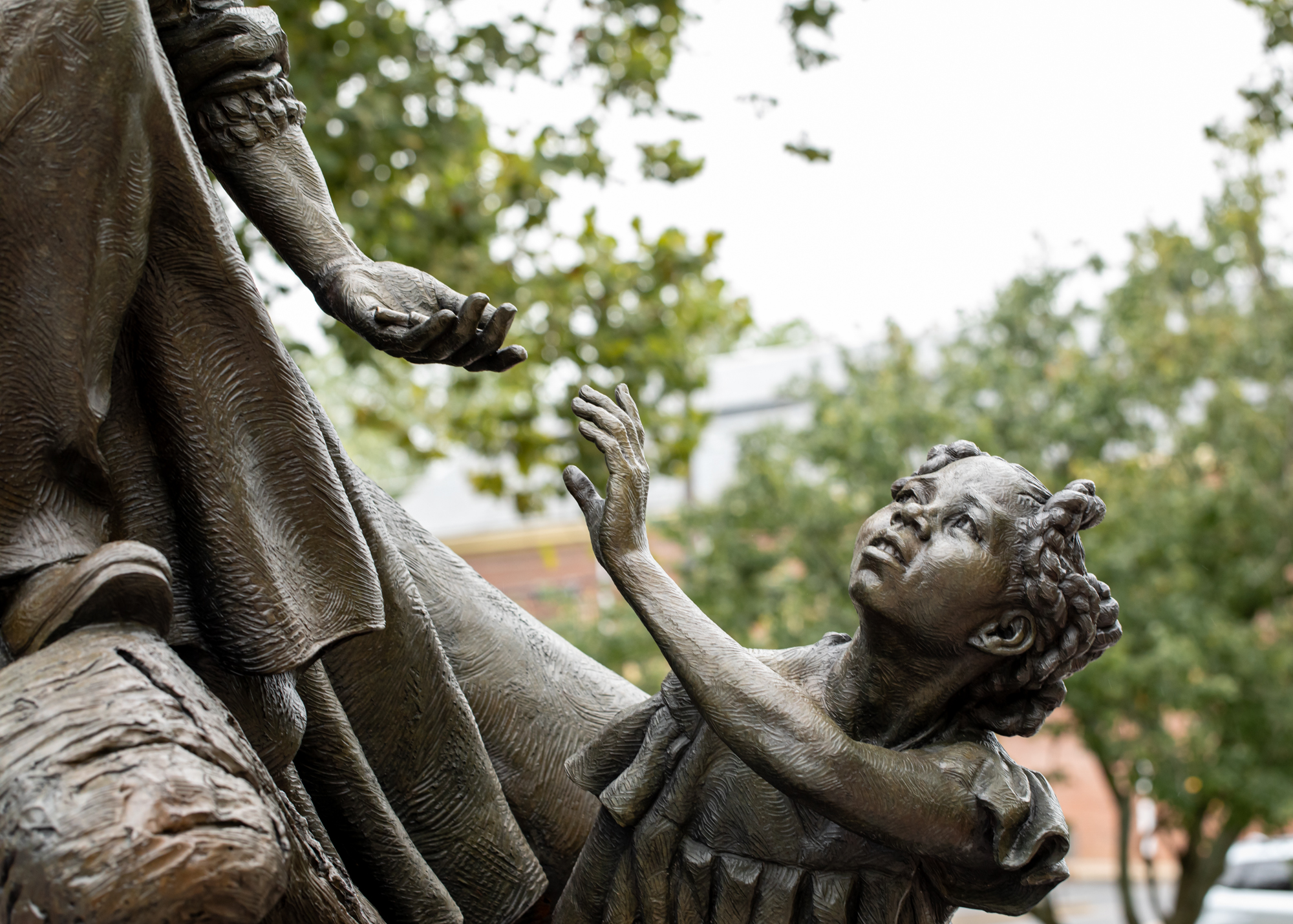The amazing new Harriet Tubman sculpture, “Beacon of Hope” has now made its permanent home in Cambridge, Maryland – just a few miles from where the Underground Railroad conductor was born in Dorchester County on Maryland’s Eastern Shore. The Sept. 10, 2022 dedication of this remarkable, 13-foot bronze sculpture by artist Wesley Wofford, was filled with deep emotions, meaningful words, dance, poetry, and music. (Watch video of the ceremony.) The timing was perfect: 2022 is the bicentennial of Harriet Tubman’s birth, and September is International Underground Railroad Month.
The vision to create the statue began more than two years ago, when Wofford created “The Journey to Freedom,” a traveling sculpture of Harriet Tubman that was designed to go from city to city, on display for a month or two at each location. The statue was on display in Dorchester County, Maryland – birthplace of Harriet Tubman – in 2019. Once the statue went on to its next destination, the dream began: Let’s bring Harriet “home” with our own statue that could live permanently in the place of her birth. The decision was made to commission the same artist, Wesley Wofford, to create a new design that would speak to her roots in Dorchester County.
After two years of community grassroots efforts, research, community planning, the sculpture was installed at the Dorchester County Courthouse in Cambridge, Stop #3 on the road trip known as the Harriet Tubman Underground Railroad Byway. The location is meaningful, as the courthouse was once the site of slave auctions – and was the site of the first escape that Tubman engineered for her niece Kessiah Bowley.
During the dedication ceremony, artist Wesley Wofford spoke about some of the meaning behind the sculpture. “The entire project was very community driven… what we wanted to talk about was, what is the origin story of Harriet Tubman,” he said. “The base (of the statue) represents the hundreds of thousands of lives adversely affected (by slavery). The shackles at the base represent all those lives.” He went on to explain, while pointing first to the woman depicted in the sculpture, and then at the young girl: “This is Harriet Tubman, and this is Araminta Ross (Tubman’s name when she was a child)…” When she was a girl, Araminta was accidentally hit in the head with a two-pound weight by an overseer aiming for an enslaved boy at the Bucktown General Store (Stop #17 on the Tubman Byway). She nearly died, and suffered from seizures and visions the rest of her life. “Harriet talked about that event turning her into Harriet Tubman and giving her the visions that helped her along her path,” Wofford said. “This (statue) is her first vision – of her future self…. Her future self is handing a generational key to her… She is giving her the strength to say this is the strong woman you need to become, because you’re going to need me now – and 200 years from now they’re still going to need us. So reach within yourself and become that woman.”
Wofford also talked about how Tubman used the North Star to navigate out of Dorchester County, from slavery to freedom. “She later became that North Star for all of us to continue to emulate and follow. Her hand (in the sculpture) is a compass rose. it’s facing true north.”
Cambridge is now home to two major pieces of public art dedicated to Harriet Tubman: “Beacon of Hope” and “Take My Hand,” a mural by local artist Michael Rosato that went viral in 2019 and has attracted visitors from around the world. Learn more about Take My Hand, located on the side of the Harriet Tubman Museum & Educational Center.
Things to know:
- If you’d like to see the sculpture in person, it’s located at the Dorchester County Courthouse, Stop #3 along the Harriet Tubman Byway, 206 High St., Cambridge, Maryland.
- Listen to the artist Wesley Wofford speak about the sculpture during the dedication, starting at 1:05:20.
- There’s still time to donate or to sign up for a custom brick in the plaza where the statue is located. Find out more.
- Make a visit to the statue part of a bigger road trip to the places where Tubman and other freedom seekers lived, toiled, worshipped, and escaped. Info and free resources at HarrietTubmanByway.org.
Photos here from the dedication weekend are by Jill Jasuta for Alpha Genesis CDC.




